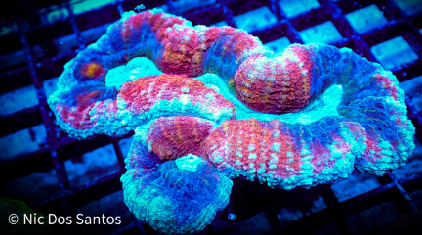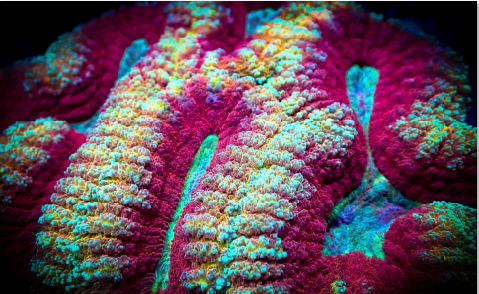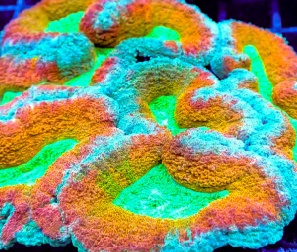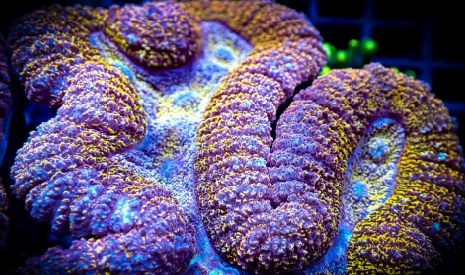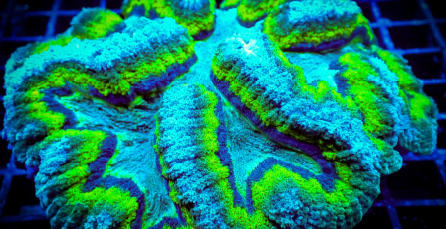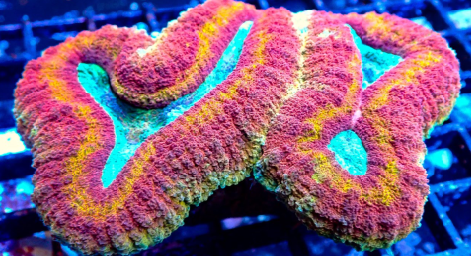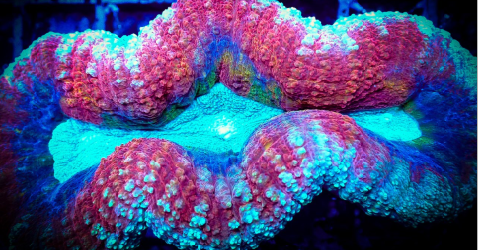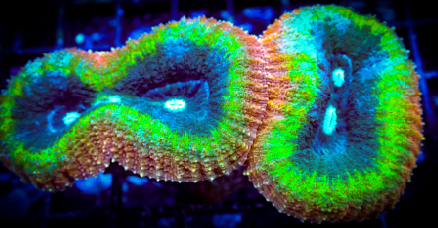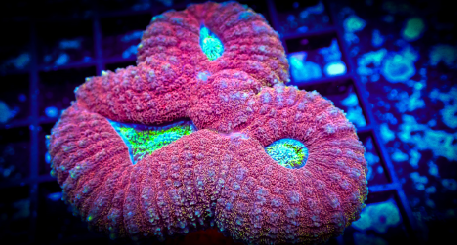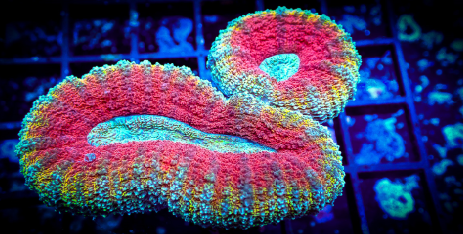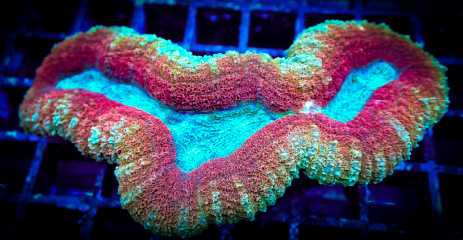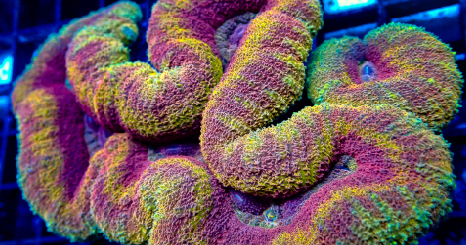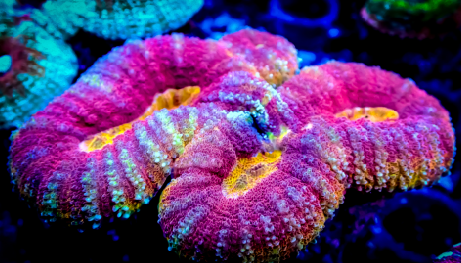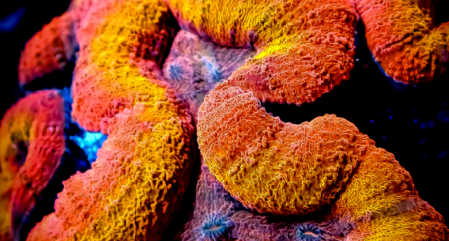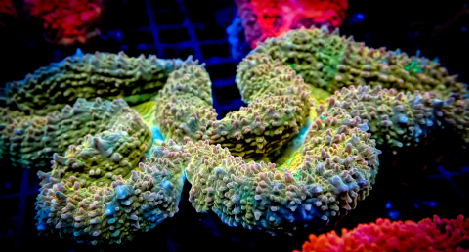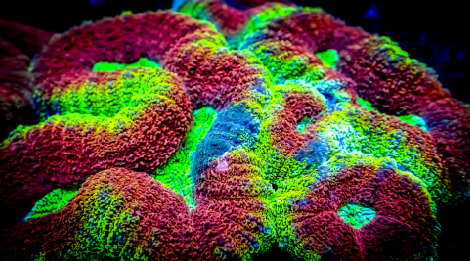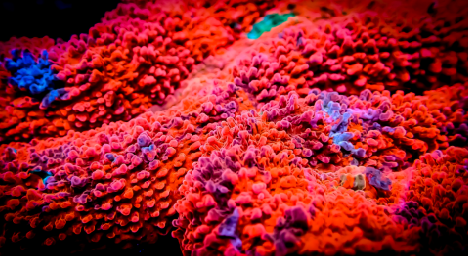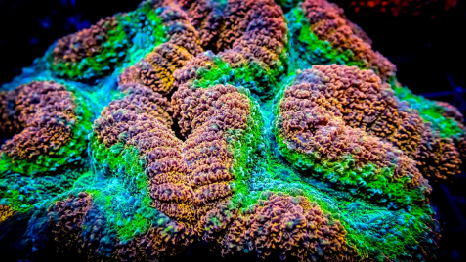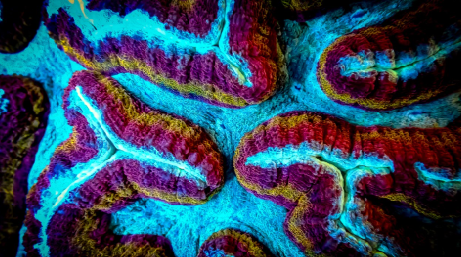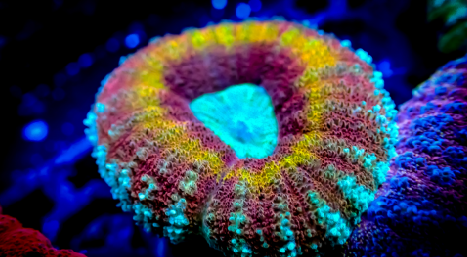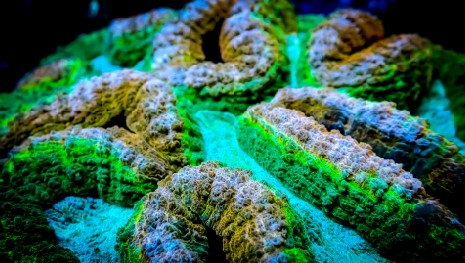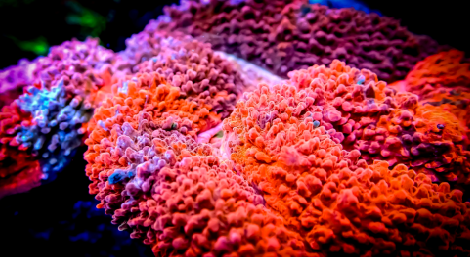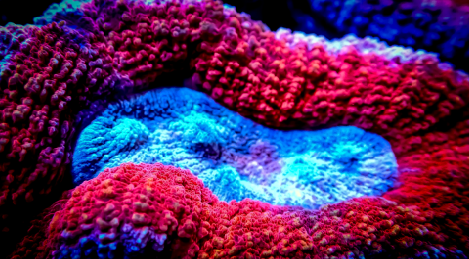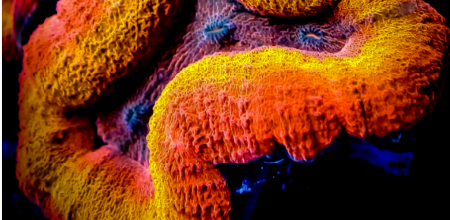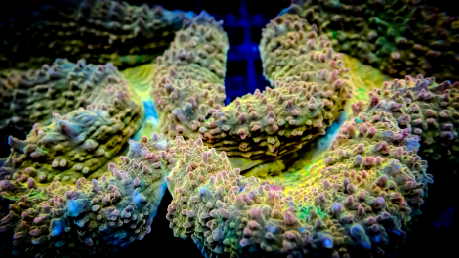Lobophyllia sp.

This coral species offers an appealing aesthetic that enhances the beauty of any reef aquarium.
Known for their fleshy polyps that conceal their calcareous skeleton, Lobophyllia corals come in a range of textures and color forms. Some variants are smooth, while others feature a pimpled surface, adding to their visual intrigue. They come in every colour imaginable and we have 2 ranges the special unique pieces that are tricolour, brilliant and the rare colourations.? Then the ultra range that are beautiful colours that are usually bright either double or single coloured.
Lobophyllia corals tend to be large specimens and are slow growers.? That being said, this coral species is hardy and disease-free, making it a suitable choice for those fairly new to the hobby.
Caring for Lobophyllia corals involves feeding them small, meaty marine-based foods. The best placement for a Lobophyllia coral is generally on the bottom of the tank, on the sand bed, bottom glass, or the lowest rock structure, with moderate light and water flow.
Basic Water Parameters
pH
8.0 to 8.3
Salinity
34 - 36ppt
Temperature
24.0 - 26.0 Celsius
Husbandry Requirements
Lighiting
Flow
Aggressiveness
Acclimation Guide
- It is highly recommended to acclimate all corals to a new environment to prevent shocking corals.
- Place the corals in the water from the packing bags and slowly add the water from new environment (Dripping method is recommended).
- Use the water parameter above as a guide.
- When the vessel becomes full , replace the water with the new environment water by a small amount at a time.
- Ensure the water temperature matches with the new environment’s water.
- After the corals have spent adequate time in the acclimation water, gently place the corals to a new environment.
- It is recommended to place new corals under lower light intensity than usually required. Once corals show no signs of stress, it can be moved to higher lighting area gradually.”

